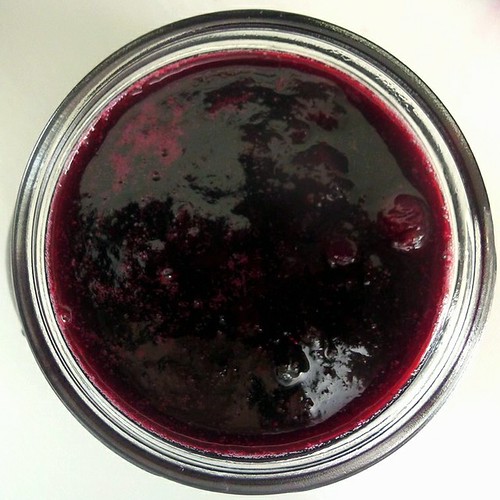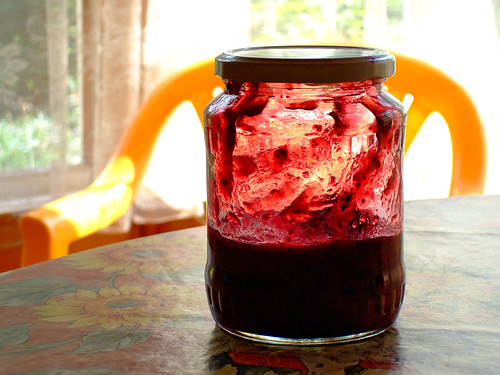
Fruit jams are sometimes referred to as “summer in a jar”, and no wonder. Jam is fruit in the extreme, providing a perfect taste bud boost when spring is still several long weeks away. Even those who didn’t share in an annual canning ritual during the summer months can take part – anyone can cook up this tasty treat in the winter as easily as they can in July. That was certainly the view of Allison Carroll Duffy when she shared her recipe for Blueberry Vanilla Jam on Maine’s 207 recently. She reminded us in no uncertain terms that frozen wild blueberries are the solution to winter jam making.
“Since it’s winter, I’ve been making this recipe with frozen berries,” said Duffy, “and you know what? I actually prefer using frozen at this time of year, as I can use locally-grown [or “wild”] berries.” Duffy’s comment serves as a perfect reminder of the advantages that frozen affords us. Convenient, loved by bakers, chefs, and home cooks, available year round in the frozen food section, and just as nutritious and delicious as fresh, frozen helps us adds important cups of fruit to our daily nutritional needs, all while providing a taste of a local summer favorite. The utter ease of availability of frozen wild blueberries means there is nothing standing in our way of making homemade jam this month – or any month – and experiencing the superior taste and nutrition of wild blueberries.
Keeping jam on hand is a must in Duffy’s household – she finds the sweet fruit taste of homemade jam irresistible. Besides its role as a foil for toast, jam lovers like theirs for lunch in classic PB & J(am), as a sweet topper for ice cream, in yogurt, or with cottage cheese. The unique sweet and tart flavor of wild blueberries are a classic for fruit jams – unsurpassed in flavor and color – especially when it’s used in small, warmed amounts whisked into salad dressings or glazes for chicken or meats, or for dolloping over goat cheese for a tasty hors d’oeuvre.
Wild blueberry jam is also a pantry staple for bakers – Blueberry Jam Sandwich Cookies come to mind. Even Medina County Life has the right idea, miles away from the wild blueberry harvest, in Ohio: they suggest frozen blueberry jam as the complement to everything from pound cake to sliced bananas. Well done!
Jam’s Jarring Health Benefits
Homemade wild blueberry jam is a sweet treat with broad appeal, but it offers big benefits when it’s made at home. Making jam helps side-step the extra sugar, calories, and preservatives that can run high in many supermarket jams. Made with whole ingredients, homemade jam helps us feel good about enjoying its many health advantages without the health hazards.

Jam’s biggest advantage is the main ingredient, wild blueberries. Wild blues have powerful antioxidant properties that support our disease prevention efforts, and since we tend to eat fewer cups of fruits and veggies this time of year, now is when we need good-for-us food the most. When we enjoy any half cup of wild blueberries, we’re giving the nod to nutrition by leaving less room for foods that satisfy our sweet tooth but offer empty calories. And just like frozen berries, jam is there to be used whenever we please: it stores well in the freezer for several months and will last in the fridge for 2 to 3 weeks.
Now that you are jam savvy, what’s stopping your from cooking up a jar of summer sweetness while the snow flies? You’re bound to find it a welcome taste of summer this season!
Looking for more jam recipe ideas? Find other ways to enjoy this Summer Fruit Spin-off all winter. You can also find out more about Allison Caroll Duffy’s classes and workshops on home canning and other methods of food preservation at CanningCraft.com.



